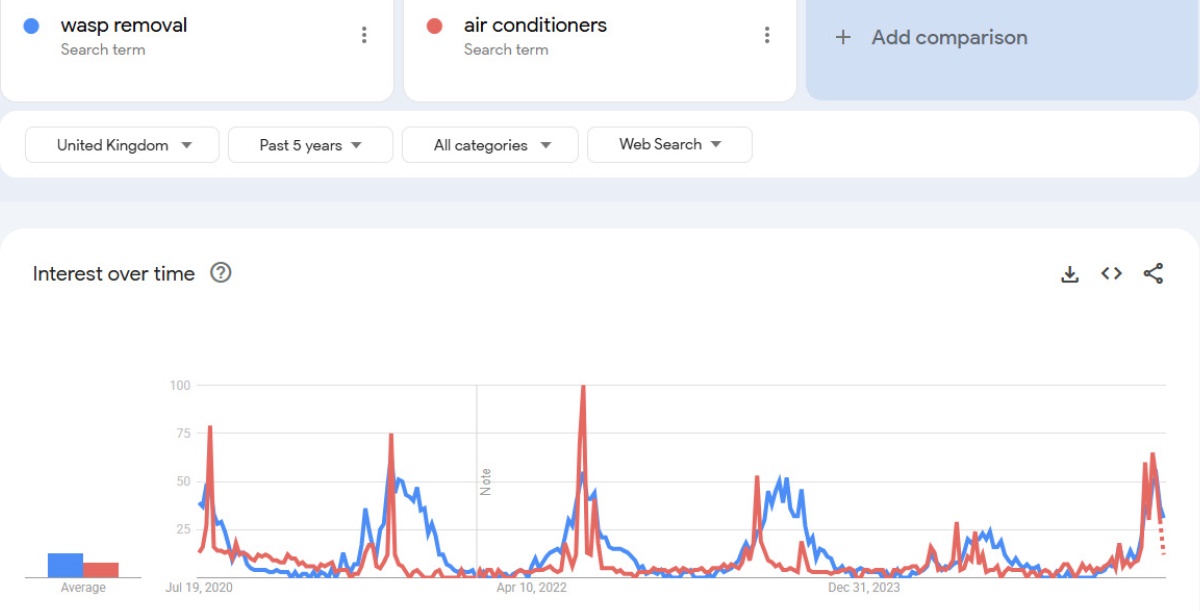PPC120 | EDITORIAL
We were CC’d into a brilliant email thread this week between our technical team and the BPCA Technical Committee. It all started with a fairly standard request from Niall, who was looking for some information about wasp numbers and data sets for his webinar. But what followed was one of those strange conversations that could only happen in pest control.
One committee member chimed in with, “As we can see from the chart below, wasps are attracted by air conditioners, because the more air conditioners sold, the greater the number of wasp removals”.

Another member pointed out immediately: “I’ve extrapolated the data and discovered that wasps must originate from a place called Wimbledon.”
Apparently, if we destroy every air conditioner and pop Wimbledon in a big glass dome, we’ll solve the UK’s wasp problems once and for all. Problem solved, right?
This kind of logic leap gave us all a chuckle, but it also sparked a proper discussion about the relationship between data and pest control. We’re all surrounded by more data than ever before.
Digital reporting, remote monitoring, AI-generated dashboards - they’re useful tools, but without a professional to interpret them, they can lead clients to some strange conclusions. “Rodent sightings are down, so I can cut my pest control visits, right?” Hmm. “Wasp treatment callbacks are up 20% v 2024, so my products don’t work, right?”
We’ve all fallen into the trap of thinking data = insight. But pest control isn’t that simple. A fly catch analysis might show an increase in numbers, but that could be a rogue door left open on a hot day.
A sudden spike in complaints doesn’t always mean a major infestation. Sometimes it just means one loud customer and an enthusiastic Facebook group.
Even outside our day jobs, we’re fed constant data and stats, and it’s easy to mistake visibility for validity. Just because a topic keeps cropping up online doesn’t make it true. Don’t trust a social media algorithm to prioritise accuracy over engagement.
When the heat dies down and the wasp-graph tapers off, I’d encourage all of us to take stock. Talk to your peers. Reflect on your summer. Chat with your suppliers and with BPCA. Ask questions. Challenge assumptions.
Data is a starting point. It’s through sharing experiences, swapping stories and a bit of trial and error that we sharpen our professional instincts.
It’s not the chart or the dashboard that makes a difference - it’s the expert reading it!
Scott and Kat
PPC editors
hello@bpca.org.uk

Source: PPC120